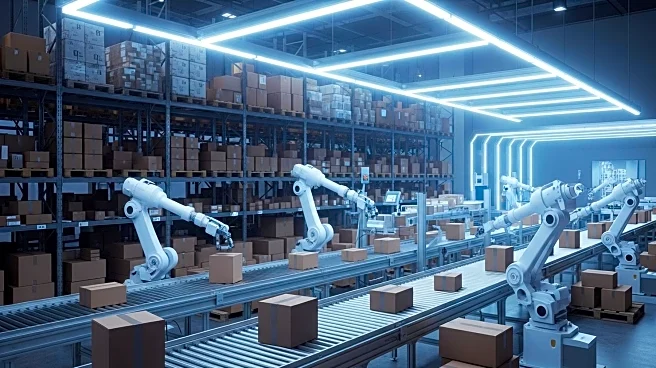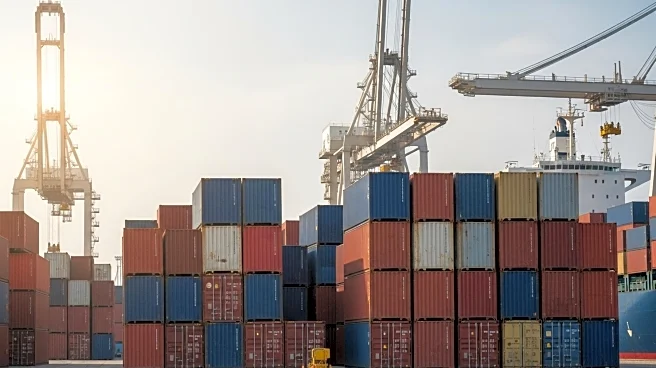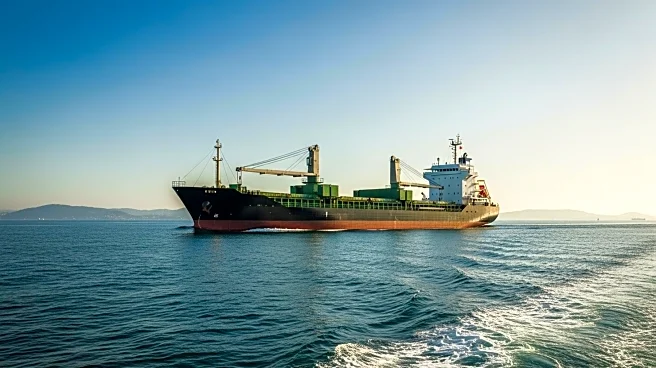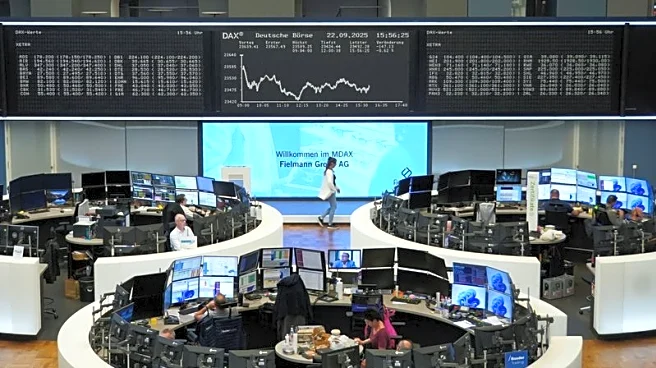What's Happening?
The recent decision by the US to end the de minimis tariff exemption on packages under $800 has significantly disrupted global shipping, affecting e-commerce retailers and warehouse operators. This policy change has led to postal operators in Europe, Asia, and the Pacific suspending deliveries to the US, resulting in backlogs and increased returns. In response, warehouses are increasingly relying on automation to manage these unpredictable spikes in volume. AI-driven robotics, supported by human-in-the-loop systems, are being utilized to handle the surges without overwhelming human labor capacity. This shift towards automation is seen as essential for maintaining the flow of goods amidst the current trade upheavals.
Why It's Important?
The removal of the de minimis tariff exemption has introduced new compliance burdens and costs for importers, leading to a significant reshaping of global trade routes. This has caused a ripple effect throughout the supply chain, with air freight capacity between China and the US dropping and major carriers like FedEx and UPS adjusting their operations. The increased reliance on automation in warehouses is not only a response to these immediate challenges but also a strategic move to enhance resilience against future disruptions. By integrating AI and robotics, warehouses can better manage surges and maintain operational stability, which is crucial for the continuity of e-commerce and retail sectors.
What's Next?
As global trade remains uncertain due to tariffs and geopolitical tensions, the trend towards automation in warehouses is expected to continue. Companies are likely to invest more in AI and robotics to enhance their supply chain resilience. This shift will require ongoing collaboration between technology providers and warehouse operators to ensure that automation systems are effectively integrated and optimized. Additionally, the financial rationale for automation will strengthen as companies seek to offset increased costs from tariffs and maintain competitive service levels.
Beyond the Headlines
The move towards automation in warehouses highlights a broader trend of integrating advanced technologies to address supply chain vulnerabilities. This shift not only improves operational efficiency but also has implications for the workforce, as roles evolve from manual tasks to system oversight and troubleshooting. The adoption of AI-driven systems also raises questions about data privacy and the ethical use of technology in managing human labor. As automation becomes more prevalent, these considerations will become increasingly important in shaping the future of logistics and supply chain management.












